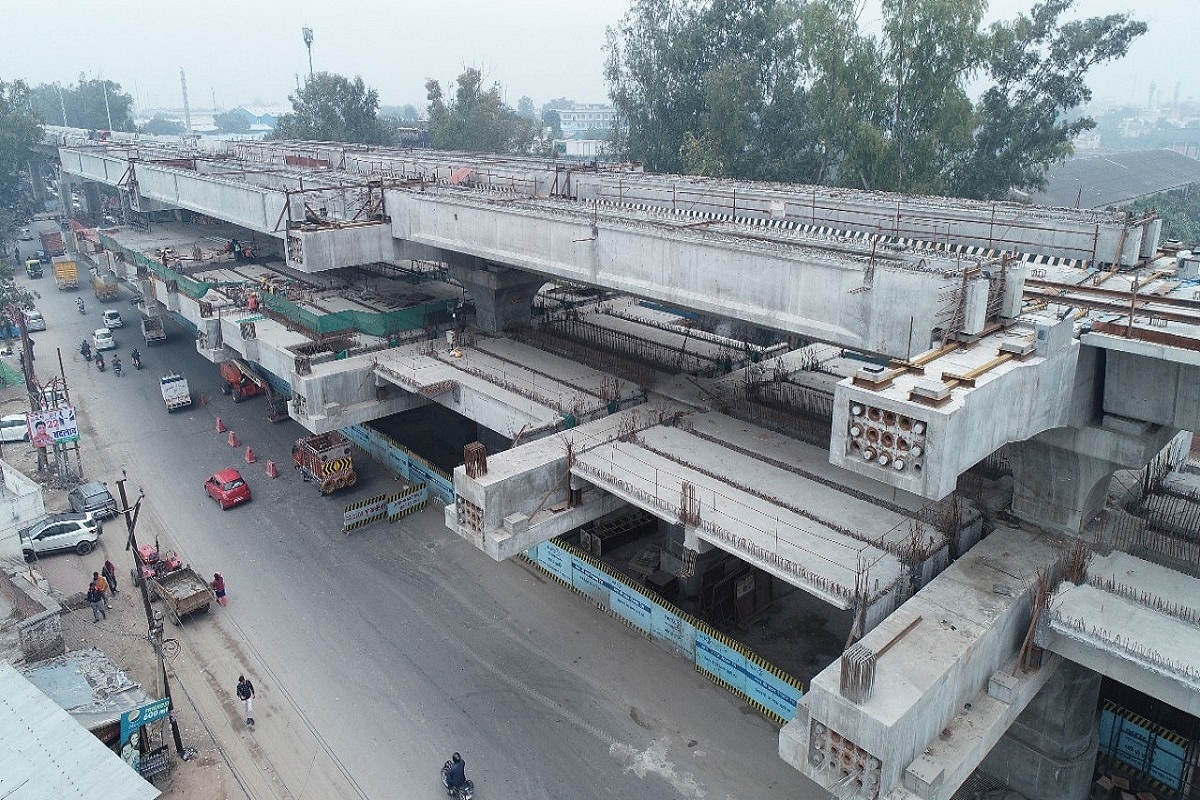News Brief
NCRTC Is Employing Pre-Cast Construction Technique On Large Scale To Construct India’s First RRTS Corridor
- Pre-cast technology being employed for building RRTS stations and viaducts will minimise public inconvenience during construction and for timely completion of Delhi-Ghaziabad-Meerut corridor.

Pre-Cast technology used in RRTS corridor construction.
National Capital Region Transport Corporation (NCRTC) is adopting the pre-cast construction technique on a massive scale in the implementation of India’s first Regional Rapid Transit System (RRTS) corridor.
This technology is being employed for building RRTS stations and viaducts to minimise public inconvenience during construction and for timely completion of Delhi-Ghaziabad-Meerut corridor.
All elevated RRTS stations of Sarai Kale Khan, New Ashok Nagar, Sahibabad, Ghaziabad, Guldhar, Duhai, Muradnagar, Modinagar North, Modinagar South and all elevated stations of Meerut, including concourse and platform level are constructed with the help of pre-cast primary and secondary beams, pier arms which is cast at the casting yards and joined together at stations and viaducts using high-capacity rigs and cranes.
Ancillary works like RCC drain, water harvesting pits etc, have been designed as pre-cast to ensure quality and to save time during construction.
Delhi-Ghaziabad-Meerut RRTS corridor, which is the first among eight corridors envisaged in NCR, passes through thickly populated areas of Ghaziabad, Muradnagar and Modinagar where the major portion of the alignment is along the median of Delhi-Meerut Road (erstwhile NH-58). The alignment also passes through the densely populated and congested areas of areas of Delhi and Meerut.
Elevated RRTS viaduct is already being constructed using launching gantries which lifts and joins segments of the girder to construct a viaduct. Pre-casting is being used in an innovative manner for this project with some of the structures being pre-casted first time in the country for such large-scale complex project.
More than 70 per cent to 80 per cent of the structural elements are being pre-casted and erected with auto launching gantries and advanced high-capacity cranes for viaduct and stations. This whole process runs parallel to on-site construction which reduces overall project duration significantly. Pre-cast box girder segments, OHE parapets, I-girders, portal u-shells, track slabs, station structures etc, are enabling fast construction of viaduct. Intensive quality checks are being ensured before using the pre-cast structures.
However, handling of such a huge quantum of the pre-cast elements is not an easy task. To cater to these elements along the entire stretch of 82 km, presently 10 state-of-the-art pre-cast yards are working 24x7 on a massive scale with high-tech facilities at different locations of Delhi, Ghaziabad and Meerut. These yards are also equipped with CCTV cameras and each activity is being monitored critically.
Unlike the conventional on-site construction which requires mobilisation of huge quantities of materials, machinery and manpower at site, pre-casting of various structural elements has significantly reduced the traffic chaos, public inconvenience, and environmental issues at site.
Such technology reduces the construction time significantly and results in high-end casting precision, good aesthetics, negligible defects, safe working environment at site. It also reduces the duration of site occupancy and barricades are removed from the roads in a timely manner.
This technique proved to be a game changer in taking up of construction work during the pandemic (Covid-19) period. Pre-cast yard is a more controlled site, and it is easier to train manpower, monitor and implement Covid-19 related norms amongst the labour.
RRTS is a mega infrastructure project that is set to transform the way people adopt public transport and travel across the national capital region. It will provide seamless connectivity across the key-urban nodes of NCR via a high-speed regional rail network.
Decongestion of the national capital, reducing vehicular traffic and air pollution, and balanced regional development are some of the reasons behind project implementation. NCRTC is adopting cutting-edge technology to ensure safe and timely completion of the works while minimising inconvenience to the road users, local passer-by, business owners and residents along the entire stretch. One of the techniques being used extensively for the project is pre-casting of various civil structures and reducing in situ construction at site.
Despite three waves of Covid -19 pandemic, NCRTC has been able to keep the pace of construction on schedule due to large scale use of pre-cast technology. Presently, the 20th launching gantries have been deployed to ensure rapid progress on the entire Delhi-Ghaziabad-Meerut corridor.
Support Swarajya's 50 Ground Reports Project & Sponsor A Story
Every general election Swarajya does a 50 ground reports project.
Aimed only at serious readers and those who appreciate the nuances of political undercurrents, the project provides a sense of India's electoral landscape. As you know, these reports are produced after considerable investment of travel, time and effort on the ground.
This time too we've kicked off the project in style and have covered over 30 constituencies already. If you're someone who appreciates such work and have enjoyed our coverage please consider sponsoring a ground report for just Rs 2999 to Rs 19,999 - it goes a long way in helping us produce more quality reportage.
You can also back this project by becoming a subscriber for as little as Rs 999 - so do click on this links and choose a plan that suits you and back us.
Click below to contribute.
Latest